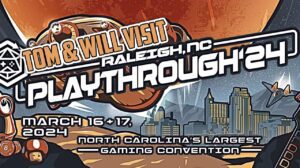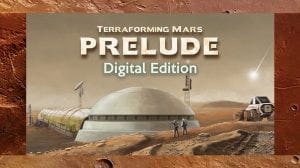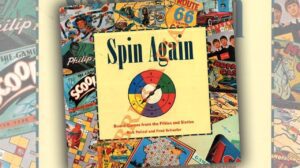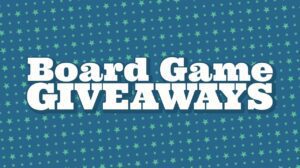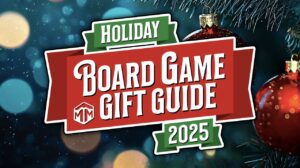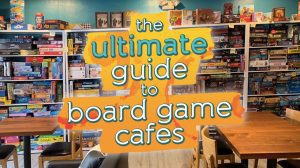Disclosure: Meeple Mountain received a free copy of this product in exchange for an honest, unbiased review. This review is not intended to be an endorsement.
There was an old lady who swallowed a cow,
I don’t know how she swallowed a cow!
She swallowed the cow to catch the goat,
She swallowed the goat to catch the dog,
She swallowed the cat to catch the bird,
She swallowed the bird to catch the spider,
She swallowed the spider to catch the fly;
I don’t know why she swallowed a fly – perhaps she’ll die!
Lyrics by Rose Bonne; Music by Alan Mills

I Knew an Old Lady was my childhood introduction to the concept of a food chain. The song starts at the bottom of the verse quoted above with the swallowing of a fly. The song progresses through larger animals, ones I knew might eat the smaller ones.
kCaloria, (2024, Self-Published) is all about the food chain. In designer Matthias Bowman’s game, you use hexagonal tiles, also illustrated by Bowman, to create a healthy, flourishing biome. As it grows, you’ll see how each living thing in the environment supports (gulp!) the other creatures.
While building your biome, each creature will require food, as indicated by colored cubes. After building your biome, you’ll score points for each cube—known in the game as kalories—left on your tiles. The bigger, more advanced the creature, the more points those kalories will be worth. The player with the most kalorie points wins the game.
For this review, I received one copy each of the first two tile sets: East Texas Piney Woods and the Mexican Cloud Forest. Let’s take a look at some of those tiles, shall we?
Reading the Tiles
Looking at a random creature tile in the game and you’ll see there’s a lot of information there. Understanding how to read a tile before playing kCaloria is essential, so let’s look at a few.
The top edge shows the cost of placing the tile, while the bottom edge shows the ecological benefit. Water, which shows nothing at the top, is free to place; at the bottom of the tile you’ll see it provides 3 blue to the environment. Play this Water tile, and you’ll place 3 blue kalories on it.

Plants require Water to grow and these two Plant tiles require either 1 or 2 water to germinate and grow. To play one of them, you’ll place it along any of the six sides of your Water tile. To pay for it, you’ll return the number of blue kalories shown at the top of the Plant tile from the Water tile. Then place the colored kalories shown at the bottom of the Plant tile on that tile.

Water (blue) feeds Fungi & Plants (green) which feed Insects (yellow); Insects are eaten by small mammals (orange) who are eaten by larger mammals (red). Finally, there are humans (purple) who eat the larger mammals.
Some animals will eat more than one thing—some eat one or the other, while others eat one thing and some others.

As you continue expanding your biome, you’ll want to start planning areas where you can play the Red (predators) and Purple (Human) tiles. These carry the largest number of points-per-kalorie, but also require a difficult combination of kalories to play.
The game continues until someone plays their second Human tile. After that, players total the points assigned to each unused kalorie in their biome, and the high score wins.
Tiles: The Modifiers
Along with the kalorie information on each tile, there are several additional icons and letters. These are the Modifiers that the tile brings with it. For instance, each Water tile has a two-letter designation on the right to show the type of area it is most compatible with. If you play a tile with the same biome designation, that +1 means you gain an additional kalorie on the tile.

There are 36 such modifiers listed in the rules. Some examples are: Critically Endangered (-1 kalorie if placed next to a Human tile), Invasive Species (able to claim bonus kalories regardless of biome type), Nocturnal (+1 if placed next to a Moonlight tile), Photosynthesis (double the kalorie when placed next to any plant). Identical creature are symbiotic: place two of the same creature along adjoining edges grants each creature an additional kalorie.
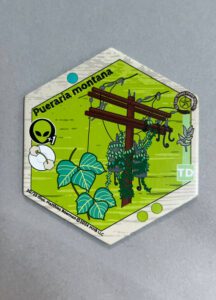
It’s no surprise that throughout the game you’ll find yourself short of the kalories you need to bring other creatures into your biome. Knowing how modifiers work will help you to know which tile works best with other tiles to maximize your kalories will help with this.
Playing the Game
Each player will start by randomly taking 7 tiles from their stack of tiles, making sure that you have at least one Water tile. If you don’t, shuffle those seven tiles back into the stack and draw another seven. Water, of course, is essential to all life on Earth.
And, since Water tiles are the only tile that is free to play (e.g., have no kalorie requirement to play), that is the tile you will start your biome with. Your starting Water tile must be a distance of 5 tiles away from your opponent’s Water tile. Luckily, the inner tray that holds the tiles is exactly that long.

Your starting biomes will be independent of one another. At some point, though, they will probably merge. When this happens, either player can place tiles that border tiles in both biomes—and when you do, you can use kalories from any adjacent tile, including those of your opponent.
To make things more interesting, each player will have tiles that can be used to disrupt an opponent’s environment. These tiles will kill off the species they’re placed next to. That wouldn’t be so bad, but remember the interdependencies lesson of the game? If I kill off one of your Plants, any Insect attached to that Plant will have nothing to eat and, therefore, die off. If that Insect dies, the Bird that depends on the Insect will starve as well. The game provides dice to mark this slow death, with each creature in the chain gaining one extra pip on the die face. Unless you can play a new tile to replace the dead tile, on each subsequent turn, another dependent tile will leave your biome.

In this way, kCaloria is a fantastic educational game, showing the interdependencies required to build a successful, thriving biome.
Thoughts
Let me start by saying I have enjoyed playing kCaloria. As a tile-laying game, the mechanics work well and, through the theme, the tile requirements make sense. And while this isn’t a crunchy game with difficult decision points, it is one that I’ve found myself quite immersed in.
I also have several issues with the current game that I hope Bowman will address if he produces a second edition of the game.
As mentioned earlier, this is designer and illustrator Matthias Bowman’s debut game. He funded kCaloria through a successful Kickstarter campaign. I have experienced the pressures of having your first Kickstarter campaign be successful: you need to have a finished example of a product that balances functionality with a professional design, all at the right price. It’s much harder than it might seem.
To get his $20 per game price tag, Bowman had to cut some corners. Keeping the art in-house certainly saved on hiring a professional artist. Unfortunately, for me, Bowman’s art lacks the presence the creatures need to make the game stand out on the table. The illustrations are fine but, for me, kCaloria’s art needs a more realistic look with shading to give the creatures the depth they need to come alive.
The most egregious cutback concerns the rule book—or, rather, the lack of rule book. Imagine buying your copy of the game and opening the hexagonal tube only to discover there are no instructions on how to play. There’s not even a (much needed) player’s aid. To get the rules, you need to go online and download the 14-page PDF.
This is particularly annoying when you consider the 36 modifiers. The last three pages of the rules are devoted to the modifiers. The iconography isn’t as clear as they need to be for a game without a rule book. Throughout all my games, I kept my tablet with the PDF pulled up to help guide me through my gameplay decisions.
Overall, the tiles are an odd combination of too busy while not providing enough clear information to the player. I think this is another example of where hiring a professional designer would have helped considerably.
Finally, look at the player count for kCaloria.

I understand that to mean, “1 to 4 players can play the game with this single copy of the game.” Bowman, however, interprets this as, “kCaloria can be played with 1 to 4 players, as long as each player has their own copy of the game.” I know I would struggle to get my gaming group to each spend $20 on a game that is okay, but not amazing.
At the time of this writing, Bowman is Kickstarting the next two tile sets for his game., Namib Desert and Mouth of the Congo River. Although the artwork is still the same, these new biomes appear to come with a Rule Book(!). If you like the idea of kCaloria, go over to the Kickstarter page (it’s already fully funded) and pledge for a copy or two.
Playing kCaloria has been fun, but I’m not sure I’ll be returning to it that often. If I do, it will likely be as a solo game—it has a high learning curve for a fairly simple tile-laying game. I admire Bowman for getting his first game funded and published. I hope he considers a more professional look for whatever game he comes up with next.




